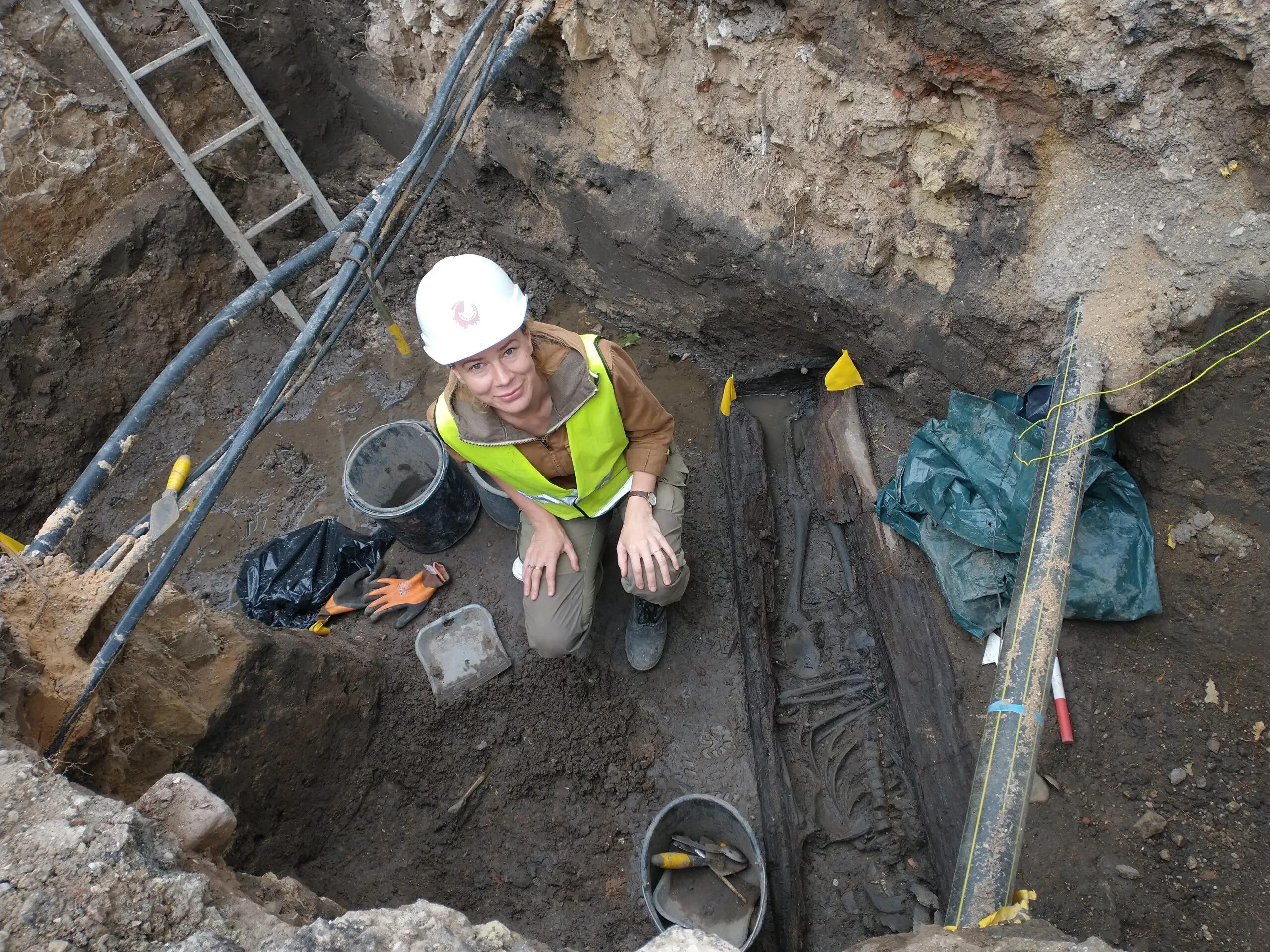“Konrāda kvartāls” holds secrets

“The plan for the courtyard at Torņa Street 1 included some small farm buildings. The defensive wall of a medieval castle was revealed there, it is wider masonry than what is visible, which could be from a more recent period, the 18th or 19th century,” says archaeologist Oskars Ušpelis. Meanwhile, at Torņa Street 3, when digging up a burial ground under the floor, the foundations of an 18th century building's mantel chimney with a paved entrance were discovered. The fact that there was a mantel chimney there was already established by archaeologists during the architectural and artistic research based on a drawing by J.K. Broce. The uncovered structures will be preserved under the new construction volume.
Currently, archaeologists are working in the corner of the courtyard at Torņa Street 3 towards the castle. “In the previous layer, I found a kopeck from 1813, but in the next, when removing the boards, it turned out that it was a burial and the boards were a coffin lid. Usually, a coffin is not so well preserved. It was only in the church itself,” says L. Lēģere, but O. Ušpelis adds that even in the 17th century plans there was no construction shown in this place. “If there is no construction shown next to the church, but the whole city is divided into small construction pieces, it is suspicious, it leads to the idea that there was a cemetery here. No bones were found inside the house at Torņa Street 3,” explains the archaeologist. The cemetery near the church existed until 1773. Since what was found could be the last burial. Archaeologists will dig deeper and estimate that there should be another layer of burials.
“There can be burials anywhere in the territory of the ancient city, and that makes it special, attractive. The layering of eras makes it an old city,” says O. Ušpelis, but L. Lēģere admits that this is an interesting and at the same time complex object, because they work together with the builders in the same rhythm.
Published14/08/2024



